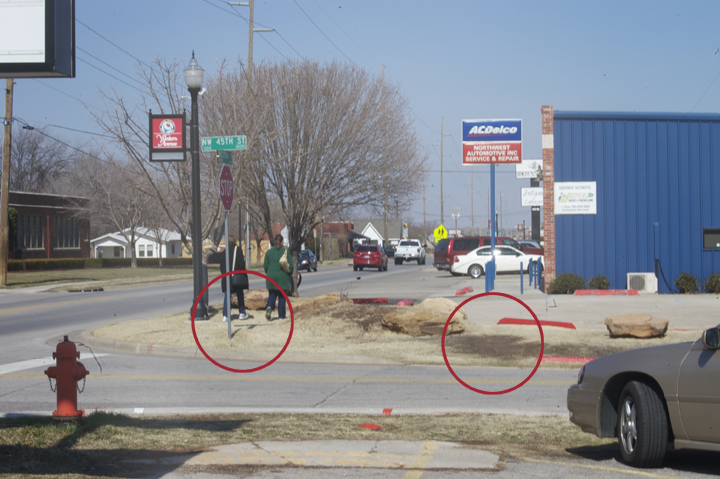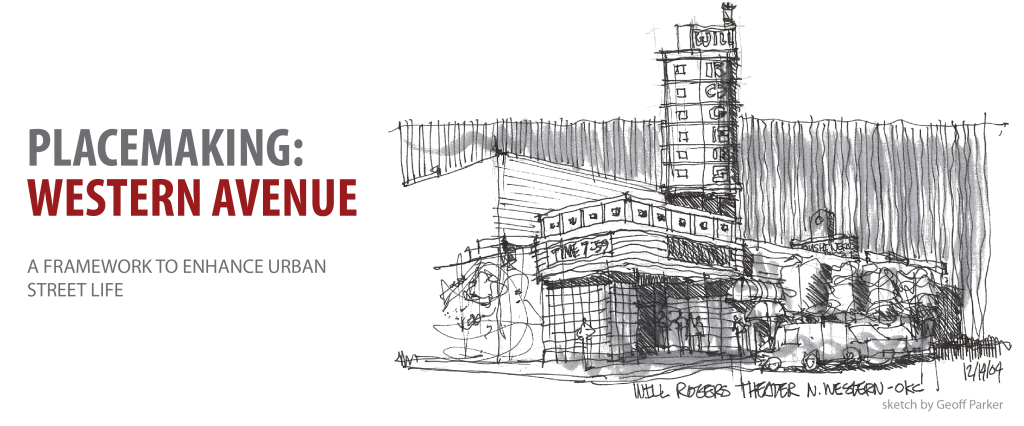We have spent a lot of time walking through the commercial district on Western Avenue recently. We want to highlight some of the most common walkability challenges that are hurting the pedestrian experience, window shopping, and public safety along Western Avenue between 41st and 46th Streets.
<- RETURN TO THE MAIN PAGE
1. Blocked Sidewalks
In this location, the asphalt material and lack of spatial definition don’t give drivers clear directions. They commonly spill out of the parking lot and block the sidewalk. We saw cars blocking this spot on two separate days.
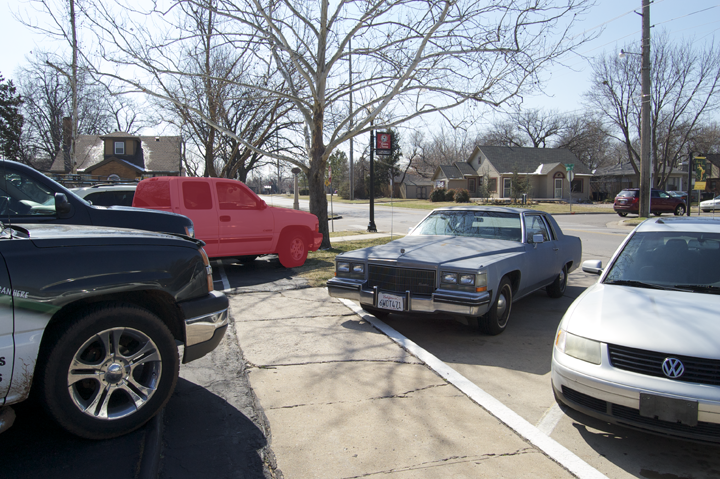
2. Dead Ends
Sidewalks often run into dead ends that are aligned with neighboring parking lots. While the area directly in front of this building is walkable, there are no connections that continue. Looking down the sidewalk and seeing a parked car blocking the path sends the wrong signal to pedestrians.
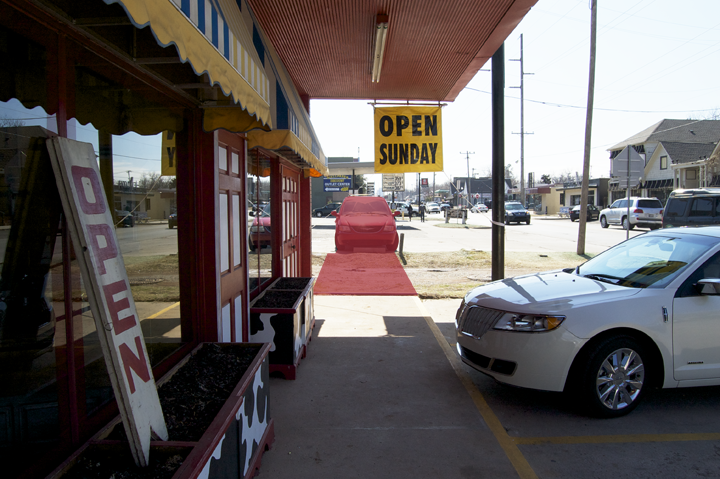
3. Large Curb Cuts
A curb cut is any location where a car can cross over the sidewalk to access an off-street area. Curb cuts are a potential point of danger between pedestrians and cars. In this example, almost the entire edge of the lot is a curb cut, so it is unpredictable where a car will pass through the pedestrian zone. This lack of defined crossing points is dangerous for both pedestrians and cars.
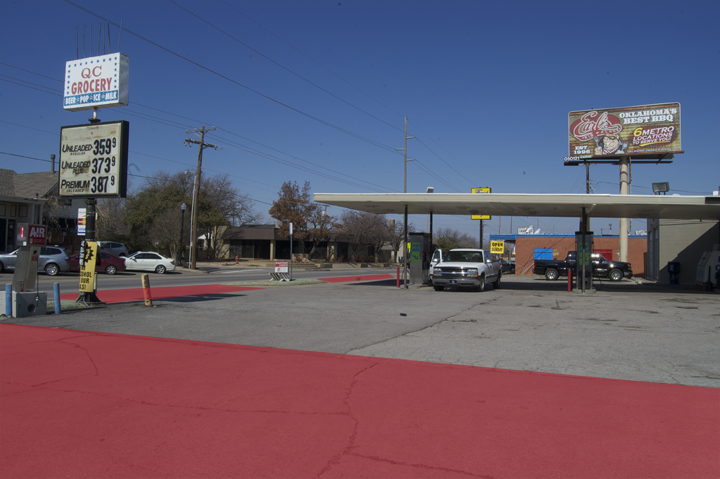
4. Elevation Changes
Several buildings have had to build stairs between the street level and the level of their entrances. Steps and elevation changes are difficult for disabled and elderly people to navigate. Even a very small change of a few inches can make it impossible for some people to access a business.
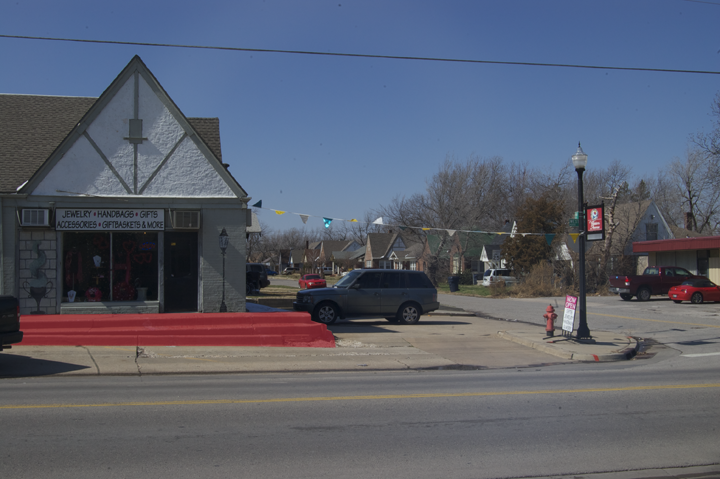
5. Pedestrians Walking in Dangerous Areas
Since sidewalks are often small or inconsistent, pedestrians often find another way to pass through. There is a large space between the travel lane and parked cars which is actually more comfortable to walk in and more consistent than many of the sidewalks. Pedestrians naturally walk in this area, but they are at greater risk of being injured by vehicles that are passing by, parking, or backing out of a space.
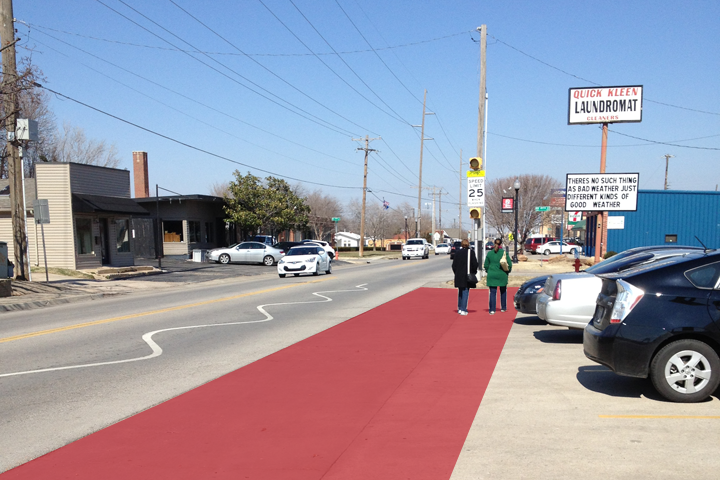
6. Bad Signals for Pedestrians and Cars
The placement of sidewalks on opposite sides of this street tell pedestrians where to cross even though there is no marked crosswalk. Meanwhile, the limit line (the thick white bar painted on the street to tell cars where to stop) communicates where a driver should stop. In this case, there is a dangerous mismatch between the location of the crosswalk and where cars will actually stop and look both ways.
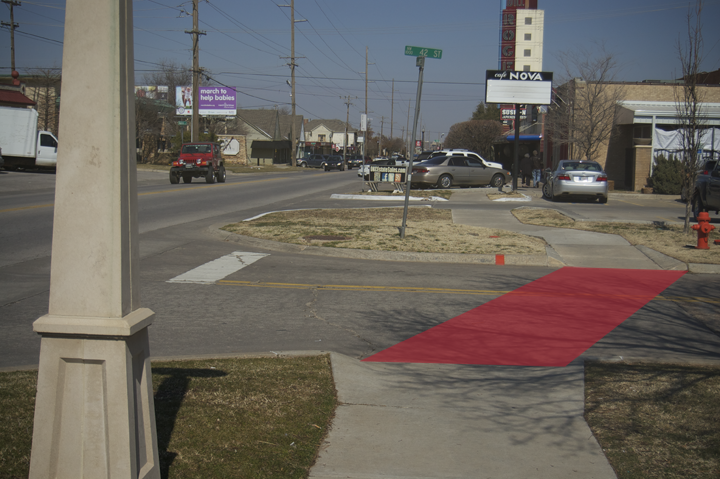
7. Desire Lines
It is easy to tell when pedestrian facilities aren’t adequately serving the foot traffic. You will notice dirt paths or worn-down grass where people frequently walk despite a lack of sidewalks. These patches are called “Desire Lines” because they tell us where people are really walking.
